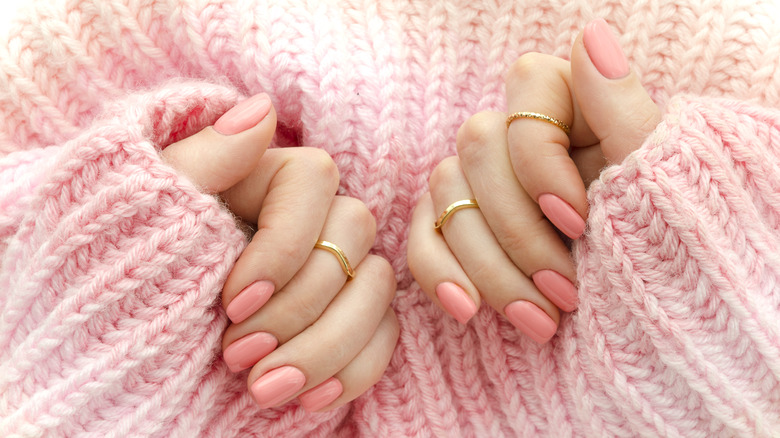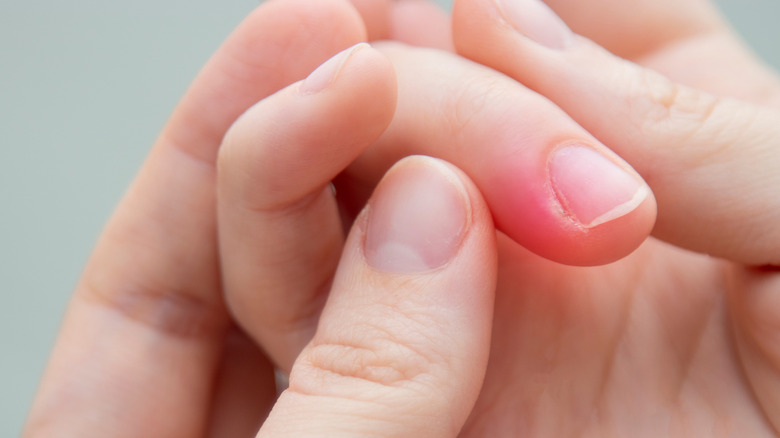You Should Stop Getting Fake Nails If This Happens To You
One of the many ways people like to treat themselves is with a nice manicure. If your natural nails are too short, thin, brittle, or not the right shape, you may opt for fake nails. According to WebMD, gel, silk, and acrylic nails are the most popular choices. Unfortunately, these can also be some of the most damaging, and the process for each type of nail differs.
Acrylic nails use a mix of powder and liquid to create a durable nail over the top of your natural nail. Gel is similar to regular polish but much more durable and long-lasting. If you choose gel nails, you must place your nails under a UV light after each coat until they dry. Silks are a method in which your technician will glue a fabric wrap to your natural nails.
While your fake nails may help to enhance your beauty, they may lead to other health problems.
Your fake nails could cause nail infection and damage
If your fake nails are causing your natural nails to become infected, you should stop getting them. A nail infection from fake nails can happen for several reasons. According to the Mayo Clinic, when your natural nail grows out, it creates a gap between your cuticle and the fake nail that's lying on top. To maintain these nails, you'll need to see a technician every two to three weeks to fill in what's grown out from your natural nail. However, if you don't go in for that touch-up, the gap can create the warmth and moisture necessary for bacterial and fungal infections to grow and thrive. Also, the chemical exposure and nail filing during the application and filling process can make your natural nails weak and more prone to infection (via WebMD).
Additionally, a 2020 article in the International Journal of Women's Dermatology found that women who wear acrylic nails are more prone to onycholysis, a separation of the nail plate from the nail bed. The adhesive used to bond the artificial nail to the natural nail is stronger than the bond between the nail plate and the nail bed. This is why hitting or snagging your fake nails causes damage to your natural nails, leading to infection.
You could have an allergic reaction to artificial nails
You may not have realized, but the products used during the process of getting fake nails can cause an allergic reaction. Dr. Rajani Katta, a clinical assistant professor of medicine at Baylor, says, "You can develop damage to the nails, irritation to the skin around the nails or allergic reactions to the nail chemicals" (via Baylor College of Medicine). Some may think that they avoid chemicals by not getting acrylic nails, but that's not the case. Dr. Katta says, "Many of my patients don't realize that even gel and shellac nails may use the same types of chemicals as acrylic nails."
If you have itching, redness, flaking around the nail bed, or even on the face, you could be having an allergic reaction to your fake nails. To avoid an allergic reaction, regular nail polish may be the best option, especially if you have sensitive skin, according to Baylor College of Medicine. If you have signs of an infection or an allergic reaction, you may need to see a dermatologist for treatment.


